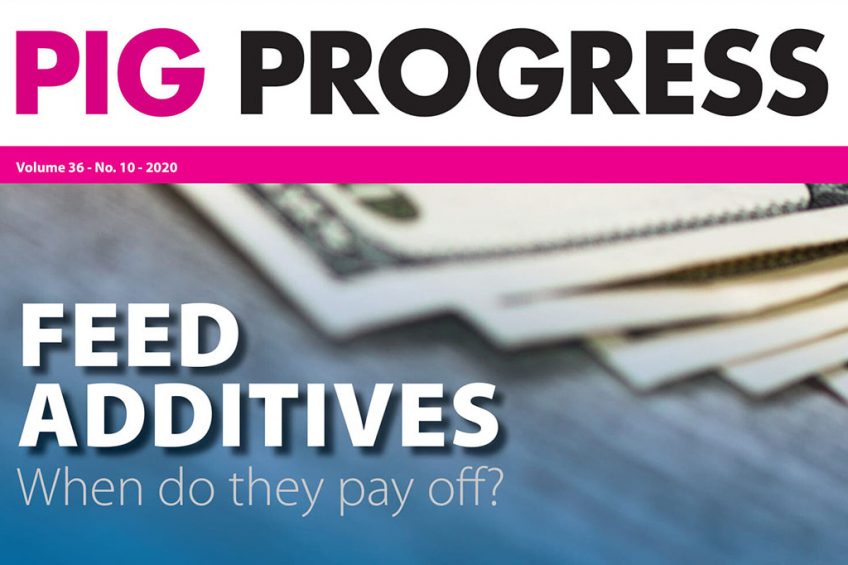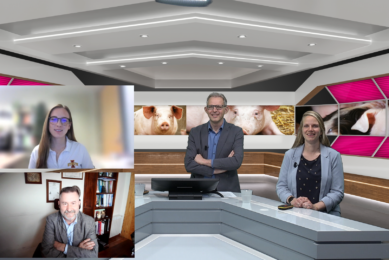Webinars, welfare and weaning in Pig Progress 10

The 10th edition of Pig Progress is now available in digital format. Between the covers of this edition, there is attention for what was discussed during dedicated webinars with swine experts from around the world, welfare and sustainability concerns in pig production, and the stressful process of weaning.
View Pig Progress digital magazine
A week full of swine webinars
Misset International’s Pig Progress editor, Vincent ter Beek, hosted a full 2 days of webinars aimed at informing, discussing and learning about advanced pig production, weaning and gut health. All webinars are available for viewing on-demand on the Pig Progress website. Read the review on pages 8-9.
Livestock events resume in China
While international meetings in the pig industry in the rest of the world came to a halt, most livestock shows held in China resumed in September and October with some events reporting a record number of visitors. The livestock industry is eager to seek solutions for a new era, correspondent Allen Shu reports on pages 10-11.

Column: Optimum stomach function
Weaning piglets is stressful – low feed intake and stress caused by the weaning process result in damage to the intestinal wall and compromise the immune response. On page 13, new columnist Francesc Molist from Schothorst Feed Research discusses ways to lower stomach pH, thereby optimising stomach function.
On-farm environmental mitigation strategies
Reducing the environmental impact of pig farming systems is a key sustainability challenge. Researchers at the UK’s Newcastle University evaluated the cost-effectiveness of several environmental abatement strategies related to pig housing and manure management. The university’s Dr Georgios Pexas tells more on pages 15 and on.

Pig welfare calls for broad approach
Welfare and sustainability concerns in pig production are increasingly important in the eyes of retailers, consumers and governments. Proper on-farm diagnostics are needed before a solution can be proposed, writes a group of Cargill experts. Pages 18-19

Interview: “China is urgent and important to us”
Earlier this year, Netherlands-based breeding company, Topigs Norsvin, appointed Villaume Kal as the new CEO. He aims to let the company grow in big countries where large integrators can be found. Senior reporter Kees van Dooren reports as from page 20.

A hot innovation disinfecting trucks
The EU PiG Innovation featured in this edition is the DrySist system, which effectively uses heat to disinfect trucks to improve biosecurity on swine farms. Correspondent Natalie Berkhout reports on page 23.

Welfare, environment key in innovative barn
Dutch pig farmer Ivo Bekkers, strongly believes in a modular barn with many welfare aspects. His innovative barn at ‘The Familievarken’ (The Family Pig) has a special feature: pig toilets. Anne-Marie van der Linden, journalist at Boerderij went on farm; her report can be read as from page 24 and on.

Influenza causing reproductive failure
The link between influenza and reproduction rates is more significant than one might think. As a result, better prevention against influenza improves sow herd performance, writes Julia Stadler, DVM, from the Ludwig-Maximilians University of Munich, Germany. Page 28

Controlling piglets’ microbial environment
Cleaning and disinfection are necessary before a new batch of animals enters the building. Surfaces, however, do not remain sterile. What if beneficial bacteria were applied to building surfaces and equipment right after cleaning and disinfection? Julia Plateau-Gonthier of Lallemand Animal Nutrition explains on page 30 and further.

Probiotics and enteric pathogens in young pigs
Among mammals, the pig is one of the most immature species at birth. Challenges for young pigs are also plentiful, including having immature gut microbiota. As Jens Noesgaard Jørgensen explains on pages 32-33, nutrient intake and retention are important, not only for the survival of the young piglet but also for growth and later potential reproduction performance.

Canola meal in pig diets: Inroads around the world
Canola meal is high in protein and acreage of the crop has increased in Europe, Canada, Australia and the US. As a result, canola meal as a feed ingredient has made strong inroads into the diets of many livestock species, particularly pigs. Correspondent Treena Hein reports on pages 34-35.

The value of feed additives: An economic analysis
It is generally accepted that feed costs equate to 60% of a pig producer’s cost of production, but with feed additives, producers can do more with less feed. Is it possible to economically quantify the effect of feed additives on a farm? Columnist Dr Casey Bradley makes an analysis on pages 37 and further.

Column: Pain management for castration
In this column, Dr Monique Pairis-Garcia discusses pain in piglets as a result of castration. Three significant factors influence pain management: the lack of approved pain-relieving products that have been validated for efficacy; economic limitations and challenges associated with administering analgesic drugs to pigs; and deficient guidelines and training for veterinarians to develop protocols. Read her column on page 42.











